Representations of the Passion of Christ in Brazil: Devotional Sculpture as Open Artwork
Abstract
1. Introduction
2. Materials and Methods
3. Results
3.1. The Agony in the Garden in the City of São Paulo (State of São Paulo)
3.2. The Agony in the Garden in Mogi das Cruzes (State of São Paulo)
At the entrance to the city, on the Rio de Janeiro side, there is a small convent belonging to the Carmelite Order. I entered the church and found the chancel tastefully decorated. They arranged in the church a series of large images representing Christ and various saints, destined to be carried in Holy Week processions. Such wooden images are life-sized, painted, and dressed.9
3.3. The Agony in the Garden in Itu (State of São Paulo)
3.4. The Agony in the Garden in Santos (State of São Paulo)
4. Discussion
A preacher goes preaching the Passion, arrives at Pilate’s praetorium, tells how Christ was made a king in mockery, and says that they took a purple cloth and put it on his shoulders; the most attentive audience hears that. He says that they wove a crown of thorns and nailed it to his head; they all listen with the same attention. He says also that they tied his hands and put a reed in them for a scepter; the same silence and the same suspension continues in the listeners. A curtain is drawn in this space, the image of Ecce Homo appears; behold all of [the listeners] prostrate to the ground, behold all of them beating their breasts, behold the tears, behold the cries, behold the shouts, behold the slaps. What appeared in this church? The preacher had told everything that the curtain covered. He had already spoken about the purple cloth, he had already spoken about the crown and the thorns, he had already spoken about the scepter and the reed. If that did not move hearts at all, how does it now do so much?—Because then it was Ecce Homo heard, and now it is Ecce Homo seen; the preacher’s account entered through the ears, while the representation of [Jesus] entered through the eyes. Do you know, preaching Fathers, why our sermons do little to stir the souls of our listeners?—Because we do not preach to the eyes, we only preach to the ears16.
5. Conclusions
Author Contributions
Funding
Conflicts of Interest
| 1 | These kinds of sculptures derive from Spanish/Portuguese precedents in Europe. They are not unique to the Americas. For example, we refer to exhibition catalog: The Sacred Made Real: Spanish Painting and Sculpture 1600–1700 (Bray 2009). |
| 2 | “passos da paixão, oratório, em que se representa algum dos tormentos do Redentor; ou algum dos tormentos, em que se medita, ou fala” (Bluteau 1789, pp. 167–68). |
| 3 | “La palabra ‘paso’, en la acepción artística que aquí indicamos, seguramente viene del latín ‘passus’, que significa sufrimiento, esto es, paso equivalente a escena lacerante de la Pasión del Señor” (González 1959, p. 106). |
| 4 | These moments of the Cycle of the Passion are found in the Gospels of Matthew, Mark, Luke, and John. |
| 5 | |
| 6 | See Matthew 26: 36–42; Marc 14: 32–36; John18. |
| 7 | According to Chaves (2018, p. 33): “With the exception of Brazil, there is still a certain lack of knowledge regarding the role played by the tertiary movement in the execution of penitence processions in most territories that were part of the Portuguese Colonial Empire (our translation)”. The author analyzes the participation of Franciscan Third Brothers in the phenomenon of using dressed images in penitential processions from the end of the seventeenth century to the mid nineteenth century and, also, today, on the islands of São Miguel and the Azores in Portugal. For him, an artwork such as a sculpture has a double function in religious rituals as an artistic element and a link of communication between the faithful and the sacred. |
| 8 | Matthew 21: 1–11. |
| 9 | “À entrada da cidade, do lado do Rio de Janeiro, existe pequeno convento pertencente à Ordem do Carmo. Entrei na igreja e achei-lhe a capela-mor decorada com muito gosto. Arranjaram na igreja uma série de grandes imagens representando Cristo e vários santos, destinados a serem carregados nas procissões da Semana Santa. Tais imagens de madeira têm tamanho natural e estão pintadas e vestidas (Saint-Hilaire 1974, p. 84)”. |
| 10 | The Rasoura was a brief procession around the church with a limited route. |
| 11 | “§ 1º De tempo Immemorial faz a Nossa Ordem as seguintes Procissões: as dos Passos, do Triunfo do Senhor, assim como a da Rasoura para maior glória de Nossa Mai Santíssima” (Estatutos 1862). |
| 12 | A record of the costs involved in the work of renovation is found in the proceedings of the lay Carmelite brotherhood in Rio de Janeiro. In 1846 fees were levied to cover the expense of 310$000 réis (three hundred and ten thousand réis) in order to have all of the church’s statues of Christ repainted (Serzedello 1872). |
| 13 | “Não foi esquecido nenhum acessório para orná-las tais como grandes nimbos de prata etc., mas tudo isso não as tornou mais belas” (Saint-Hilaire 1940, pp. 234–35). |
| 14 | “No regresso do cortejo, colocam-se as imagens nos seus pedestais, arranjados em duas filas de cada lado da nave. Aí ficam elas expostas aos fiéis, que vêm durante todo o dia seguinte beijar-lhes os cordões da cinta” (Debret n.d., pp. 378–79). |
| 15 | “Los rituales y las obras de arte pueden ser terapeuticos precisamente porque crean significados transcendentes, y ofrecen una explicación o un remedio espiritual para lo inexplicable” (Valverde and Lara 2018, p. 51). |
| 16 | “Vai um pregador pregando a Paixão, chega ao pretório de Pilatos, conta como Cristo o fizeram rei de zombaria, diz que tomaram uma púrpura e lhe puseram aos ombros; ouve aquilo o auditório mais atento. Diz que teceram uma coroa de espinhos e lhe pregaram na cabeça; ouvem todos com a mesma atenção. Diz mais que lhe ataram as mãos e lhe meteram nelas uma cana por cetro; continua o mesmo silêncio e a mesma suspensão nos ouvintes. Corre-se neste espaço uma cortina, aparece a imagem do Ecce Homo; eis todos prostrados por terra, eis todos a bater no peito, eis as lágrimas, eis os gritos, eis os alaridos, eis as bofetadas. Que apareceu de novo nesta igreja? Tudo o que descobriu aquela cortina tinha dito o pregador. Já tinha dito daquela púrpura, já tinha dito daquela coroa e daqueles espinhos, já tinha dito daquele cetro e daquela cana. Pois se isto então não fez abalo nenhum, como faz agora tanto?—Porque então era Ecce Homo ouvido, e agora é Ecce Homo visto; a relação do pregador entrava pelos ouvidos, a representação daquela figura entre pelos olhos. Sabem, Padres pregadores, por que fazem pouco abalo os nossos sermões?—Porque não pregamos aos olhos, pregamos só aos ouvidos” (Vieira 1972, p. 31). |
References
- Bailey, Gauvin A. 2010. The Andean Hybrid Baroque: Convergent Cultures in the Churches of Colonial Peru. Notre Dame: University of Notre Dame Press. [Google Scholar]
- Bayón, Balbino Velasco. 2001. A História da Ordem do Carmo em Portugal. Lisbon: Paulinas. [Google Scholar]
- Belting, Hans. 1994. Likeness and Presence. Chicago: University Chicago Press. [Google Scholar]
- Bluteau, Raphael. 1789. Vocabulario Portuguez & Latino: Aulico, Anatomico, Architectonico […]. Lisbon: Officina de Simão Thaddeo Ferreira, vol. 2. [Google Scholar]
- Bray, Xavier. 2009. The Sacred Made Real: Spanish Painting and Sculpture 1600–1700. London: National Gallery, Distributed by Yale University Press. [Google Scholar]
- Brusadin, Lia Sipaúba Proença. 2020. A Escultura Policromada Devocional e seu Contexto na Preservação. In Anais do 4º Simpósio Científico do ICOMOS Brasil. Anais…Belo Horizonte (MG) Rio de Janeiro (RJ). Available online: https//www.even3.com.br/anais/simposioicomos2020/243212-a-escultura-policromada-devocional-e-seu-contexto-na-preservacao (accessed on 11 March 2022).
- Brusadin, Lia Sipaúba Proença. 2021. A figura do Cristo Sofredor entre mendicantes e leigos carmelitas no Rio de Janeiro (séculos XVII–XIX). História Unisinos 25: 292–302. [Google Scholar] [CrossRef]
- Chaves, Duarte Nuno. 2018. As Imagens de Vestir da Procissão dos Terceiros: Um Legado Patrimonial Franciscano em S. Miguel, Açores, Séculos XVII a XXI. Ribeira Grande: Edição Museu Vivo do Franciscanismo. [Google Scholar]
- Christian, William A., Jr. 2004. Provoked Religious Weeping in Early Modern Spain. In Religion and Emotion: Approches and Interpretations. Edited by John Corrigan. New York: Oxford University Press, pp. 33–50. [Google Scholar]
- Coelho, Beatriz, and Maria Regina Emery Quites. 2014. Estudo da escultura devocional em madeira. Belo Horizonte: Fino Traço. [Google Scholar]
- Cohen-Aponte, Ananda. 2017. Decolonizing the Global Renaissance: A View from the Andes. In The Globalization of Renaissance Art: A Critical Review. Edited by Daniel Savoy. Brill’s Studies on Art, Art History, and Intellectual History. Leiden and Boston: Brill, pp. 67–94. [Google Scholar]
- Debret, Jean Baptiste. n.d. Viagem pitoresca e histórica ao Brasil. São Paulo: Círculo do Ouro, vol. II.
- Didi-Huberman, Georges. 2007. L’Image Ouverte: Motifs de L’incarnation dans les Arts Visuels. Paris: Éditions Gallimard. [Google Scholar]
- Eco, Umberto. 2007. Obra Aberta: Forma e Indeterminação nas Poéticas Contemporâneas. São Paulo: Perspectiva. [Google Scholar]
- Estatutos. 1862. Capítulo IX—Das festividades e outras disposições gerais. In Estatutos da Venerável Ordem Terceira de N. S. do Monte do Carmo da Cidade de Mogi das Cruzes, sendo o Prior o Capitão Francisco de Paula Lopes. Aprovado em Mesa Conjuncta em 13 de Outubro de 1858. São Paulo: Typographia Litteraria. [Google Scholar]
- Freedberg, David. 1989. The Power of Images. Studies in the History and Theory of Response. Chicago: University of Chicago Press. [Google Scholar]
- Gómez-González, Marisa, and Teresa Espinosa Gómez. 2001. Diagnóstico y metodologia de restauración en la escultura policromada. Arbor CLXIX: 667–68. [Google Scholar]
- González, Juan José Martín. 1959. Escultura Barroca Castellana. Madrid: Artes Gráficas Reyes. [Google Scholar]
- Gutiérrez, Ramon. 1995. Pintura, Escultura y Artes Útiles en Iberoamérica, 1500–1825. Madrid: Ediciones Cátedra S.A. [Google Scholar]
- Jung, Jacqueline E. 2010. The Tactile and Visionary: Notes on the Place of Sculpture in the Medieval Religious Imagination. In Looking Beyond: Vision, Dreams, and Insights in Medieval Art and History. Edited by Colum Hourihane. Princeton: Index of Christian Art, pp. 203–40. [Google Scholar]
- Kopania, Kamil. 2010. Animated Sculptures of the Crucified Christ in the Religious Culture of the Latin Middle Ages. Warsaw: Wydawnitcwo Neriton. [Google Scholar]
- Lezama Lima, José. 2010. Chapter 2 from La Expresión Americana, ‘Baroque Curiosity’. In Baroque New Worlds: Representation, Transculturation, Counterconquest. Edited by Lois Parkinson Zamora and Monica Kaup. Durham: Duke University Press, pp. 212–43. [Google Scholar]
- Loyola, Inácio (Santo). 2004. Os Exercícios Espirituais. São Paulo: Madras. [Google Scholar]
- McKim-Smith, Gridley. 1993. Spanish Polychrome Sculpture and Its Critical Misfortunes. In Spanish Polychrome Sculpture 1500–1800 in United States Collections. Edited by Suzanne L. Stratton. Dallas: Meadows Museum, pp. 13–32. [Google Scholar]
- Nardy-Filho, Francisco. 2006. Notas Históricas do Convento do Carmo de Itu (Estado de São Paulo 1719–1919). Itu: Ottoni Editora. [Google Scholar]
- Oliveira, Myriam Andrade Ribeiro. 2000. A imagem religiosa no Brasil. In Catálogo da Mostra do Redescobrimento—Arte Barroca. São Paulo: Associação Brasil 500 anos—Artes Visuais, pp. 40–41. [Google Scholar]
- Oliveira-César, Joaquim Leme. 1927–1928. Notas Históricas de Itu. Revista do Patrimônio Histórico e Geográfico de São Paulo 25: 44–80. [Google Scholar]
- Ortmann, Frei Adalberto. 1951. História da Antiga Capela da Ordem Terceira da Penitência de São Francisco em São Paulo 1676–1783. Rio de Janeiro: Publicações da Diretoria do Patrimônio Histórico e Artístico Nacional. [Google Scholar]
- Quites, Maria Regina Emery. 2006. Imagem de Vestir: Revisão de Conceitos Através de Estudo Comparativo entre as Ordens Terceiras Franciscanas no Brasil. Doctoral thesis, Departamento de História do Instituto de Filosofia e Ciências Humanas da Universidade Estadual de Campinas (UNICAMP), Campinas, Brazil. [Google Scholar]
- Réau, Louis. 1996. Iconografia del Arte Cristiano. Barcelona: Ediciones del Serbal. [Google Scholar]
- Saint-Hilaire, Auguste. 1940. Viagem à Província de São Paulo e Resumo das viagens ao Brasil, Província Cisplatina e Missões do Paraguai. São Paulo: Martins Fontes. [Google Scholar]
- Saint-Hilaire, August. 1974. Segunda Viagem do Rio de Janeiro a Minas Gerais e a São Paulo (1822). São Paulo: Editora da Universidade de São Paulo. [Google Scholar]
- Santiago, Serafim. 2009. Annuario Christovense ou Cidade de São Cristóvão [manuscrito]. Itamar Freitas, Beatriz Góis Dantas, Péricles Morais Andrade. São Cristóvão: Editora UFS. [Google Scholar]
- Schmitt, Jean-Claude. 2007. O Corpo das Imagens: Ensaios Sobre a Cultura Visual na Idade Média. São Paulo: EDUSC. [Google Scholar]
- Senos, Nuno. 2010. Buildings at War: Franciscan Architecture in Colonial Brazil. In The Arts of South America 1492–1850. Edited by Donna Pierce. Denver: Denver Art Museum, pp. 39–55. [Google Scholar]
- Serzedello, Bento José Barbosa. 1872. Archivo Histórico da Venerável Ordem Terceira de Nossa Senhora do Monte do Carmo. Erecta no Rio de Janeiro desde a sua Fundação em 1648 até 1872. Rio de Janeiro: Typographia—Perseverança. [Google Scholar]
- Taubert, Johannes. 2015. Polychrome Sculpture: Meaning, Form, Conservation. Los Angeles: The Getty Conservation Institute. [Google Scholar]
- Theodoro, Janice. 1992. América Barroca: Temas e Variações. São Paulo: USP/Nova Fronteira. [Google Scholar]
- Valerio, Miguel A. 2021. Architects of Their Own Humanity: Race, Devotion, and Artistic Agency in Afro-Brazilian Confraternal Churches in Eighteenth-Century Salvador and Ouro Preto. Colonial Latin American Review 30: 238–71. [Google Scholar] [CrossRef]
- Valverde, Maricela, and Jaime Lara. 2018. Pasión y Poder: La escultura de Nuestro Padre Jesús Nazareno en Zacatecas, México. Ucoarte. Revista de Teoría e Historia del Arte 7: 45–64. [Google Scholar] [CrossRef]
- Vieira, Antônio. 1972. Vieira: Sermões. Rio de Janeiro: Agir. [Google Scholar]
- Webster, Susan Verdi. 1998. Art and Ritual in Golden-Age Spain: Sevillian Confraternities and the Processional Sculptures of Holy Week. Princeton: Princeton University Press. [Google Scholar]
- Wölfflin, Heinrich. 1984. Conceitos Fundamentais da História da Arte. São Paulo: Martins Fontes. [Google Scholar]
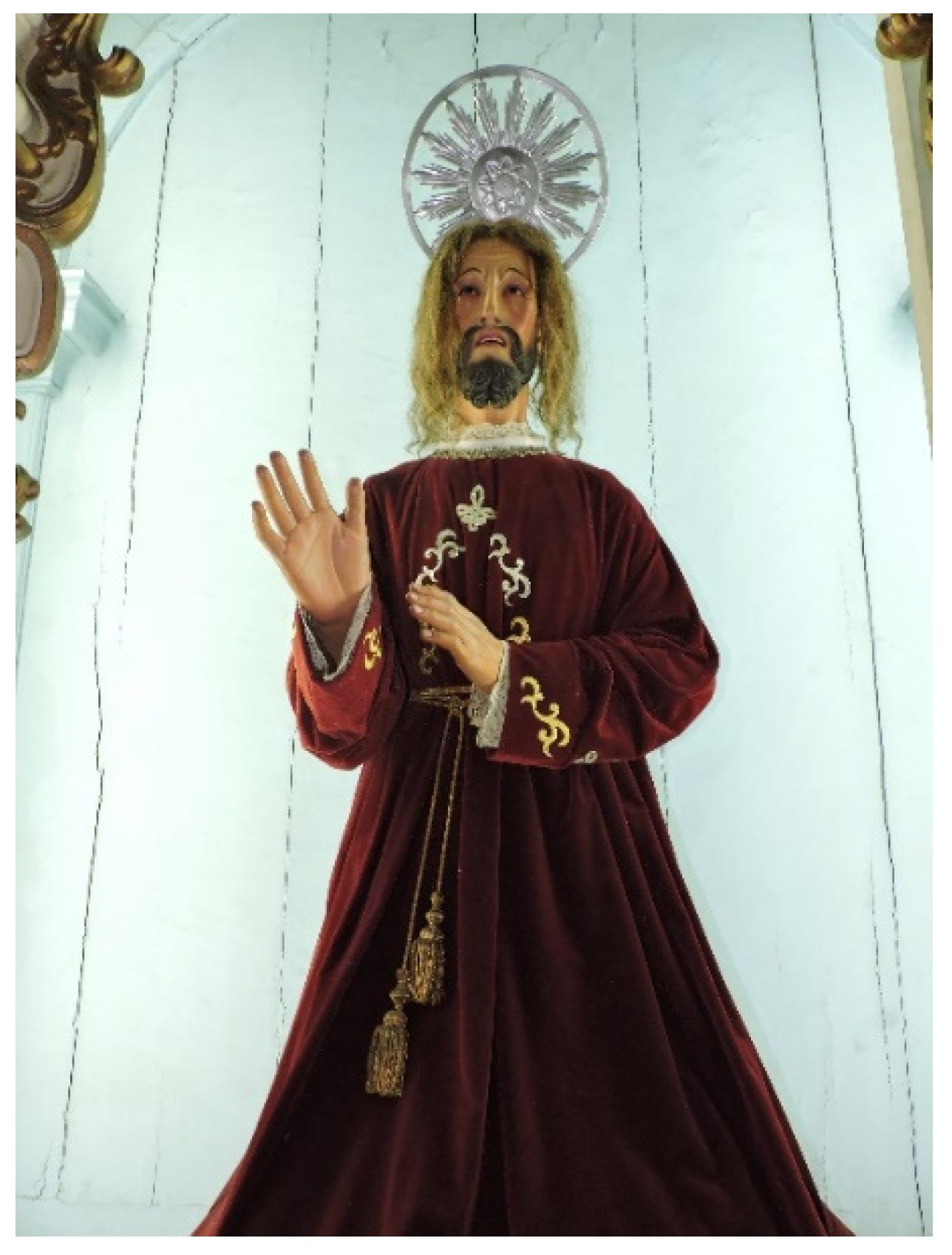
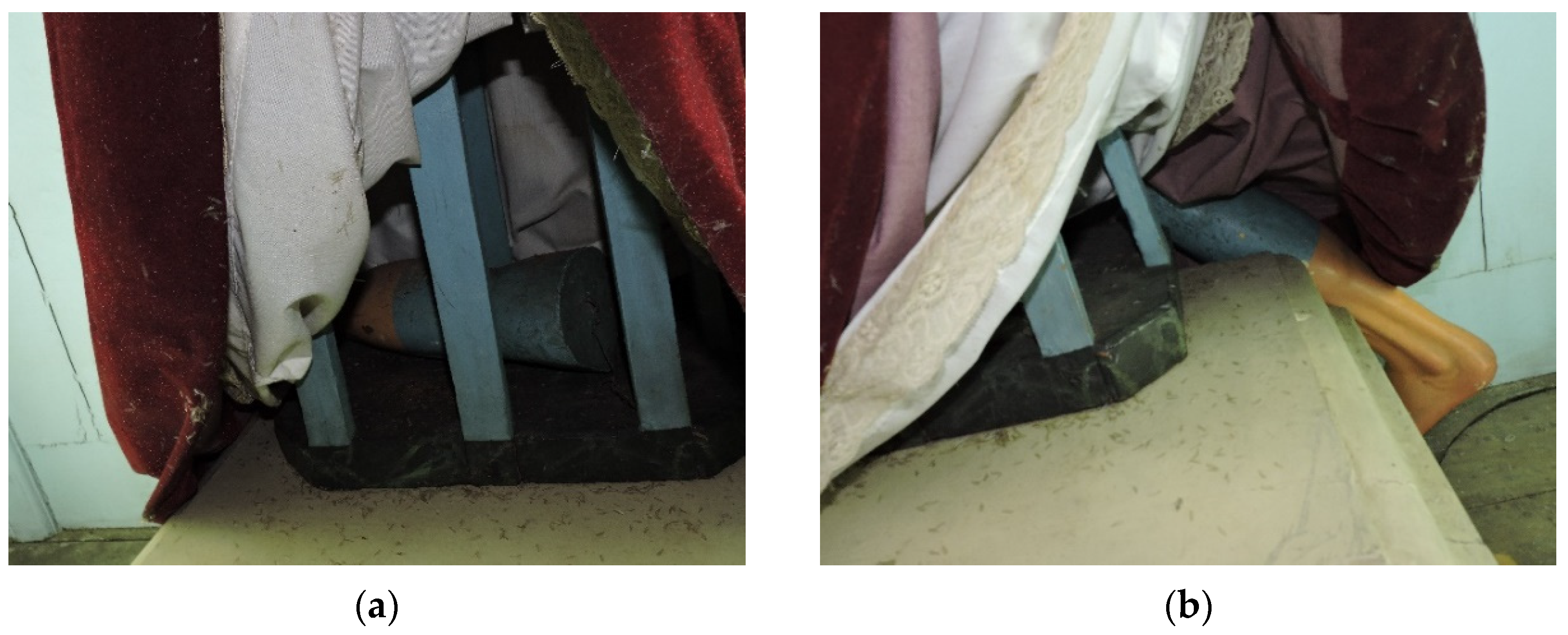
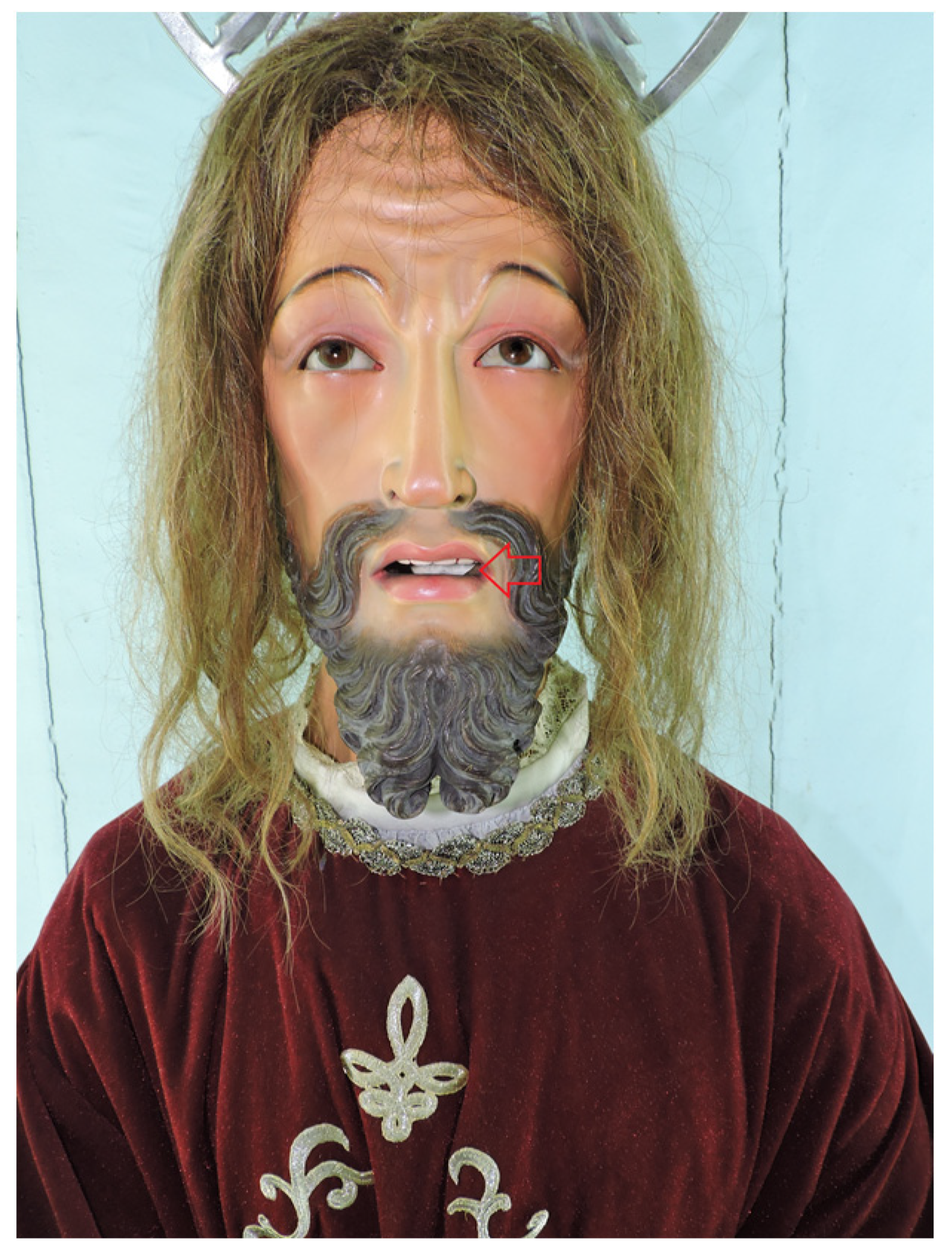

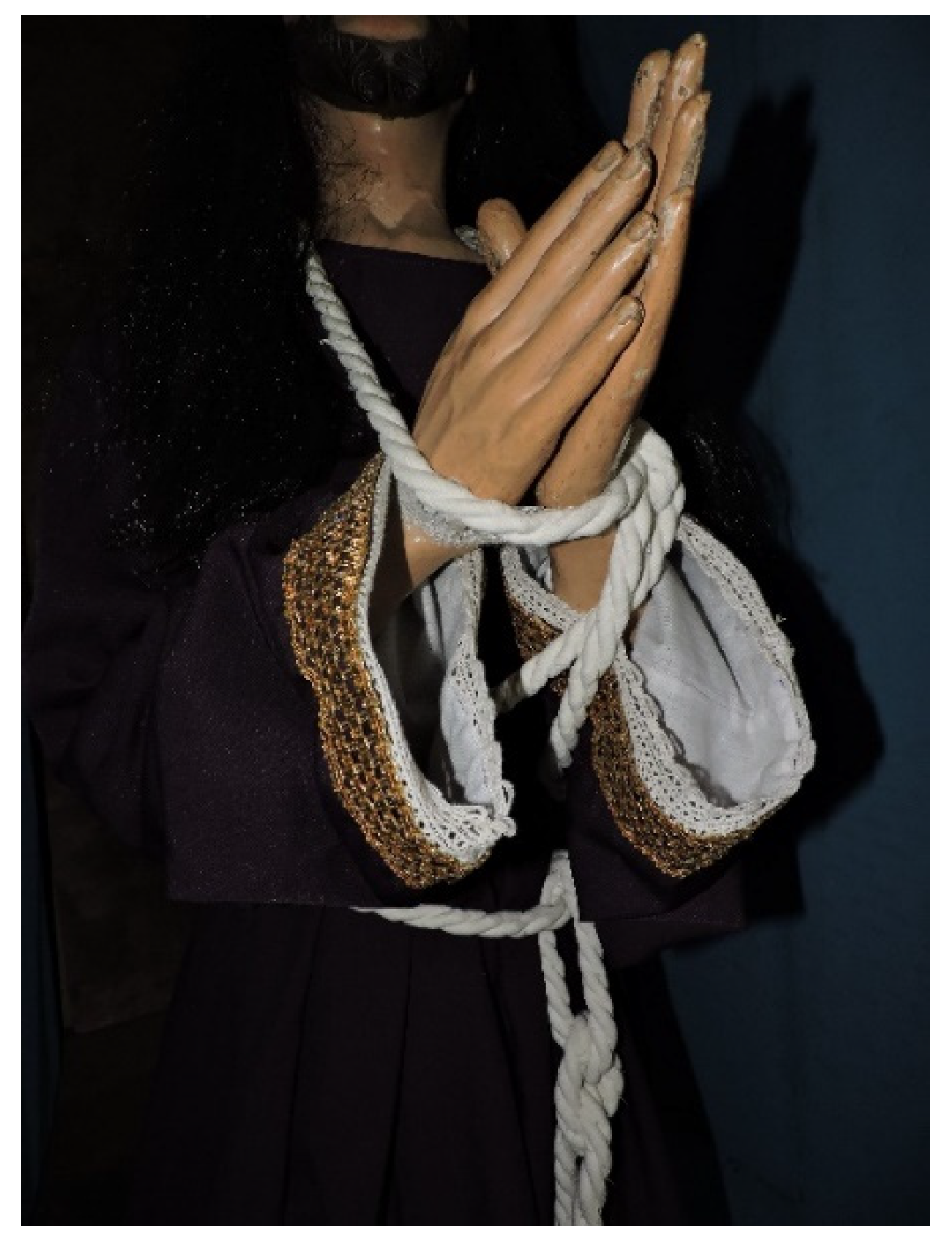
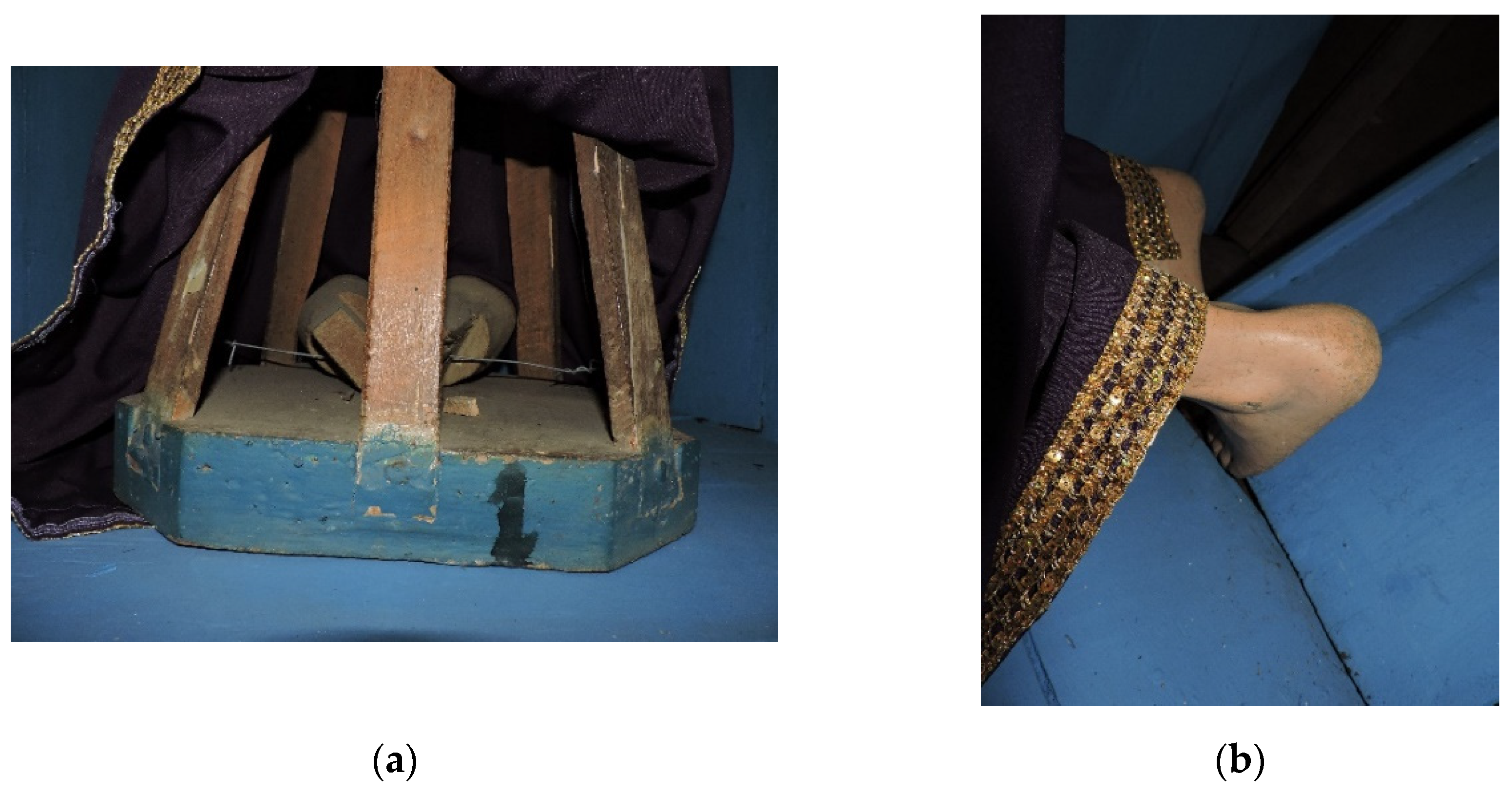
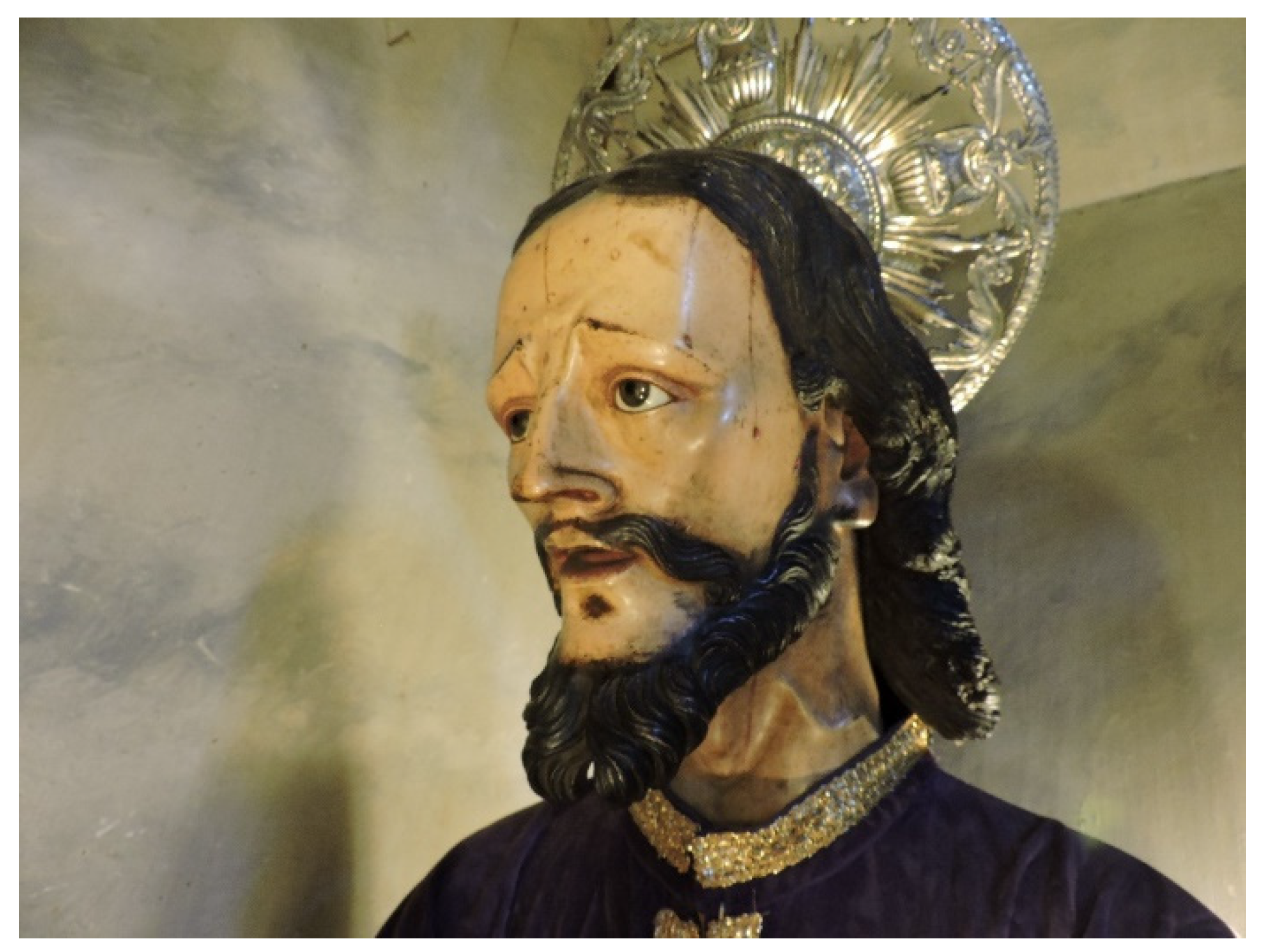

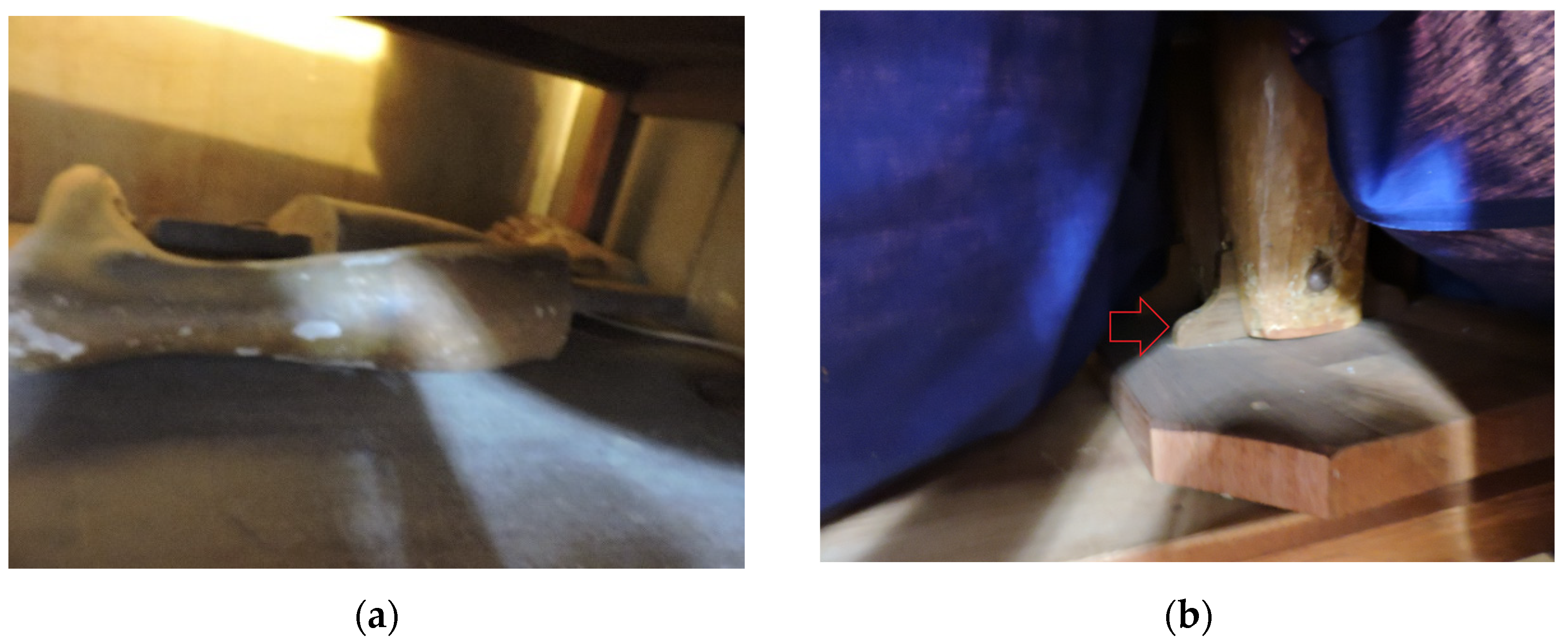
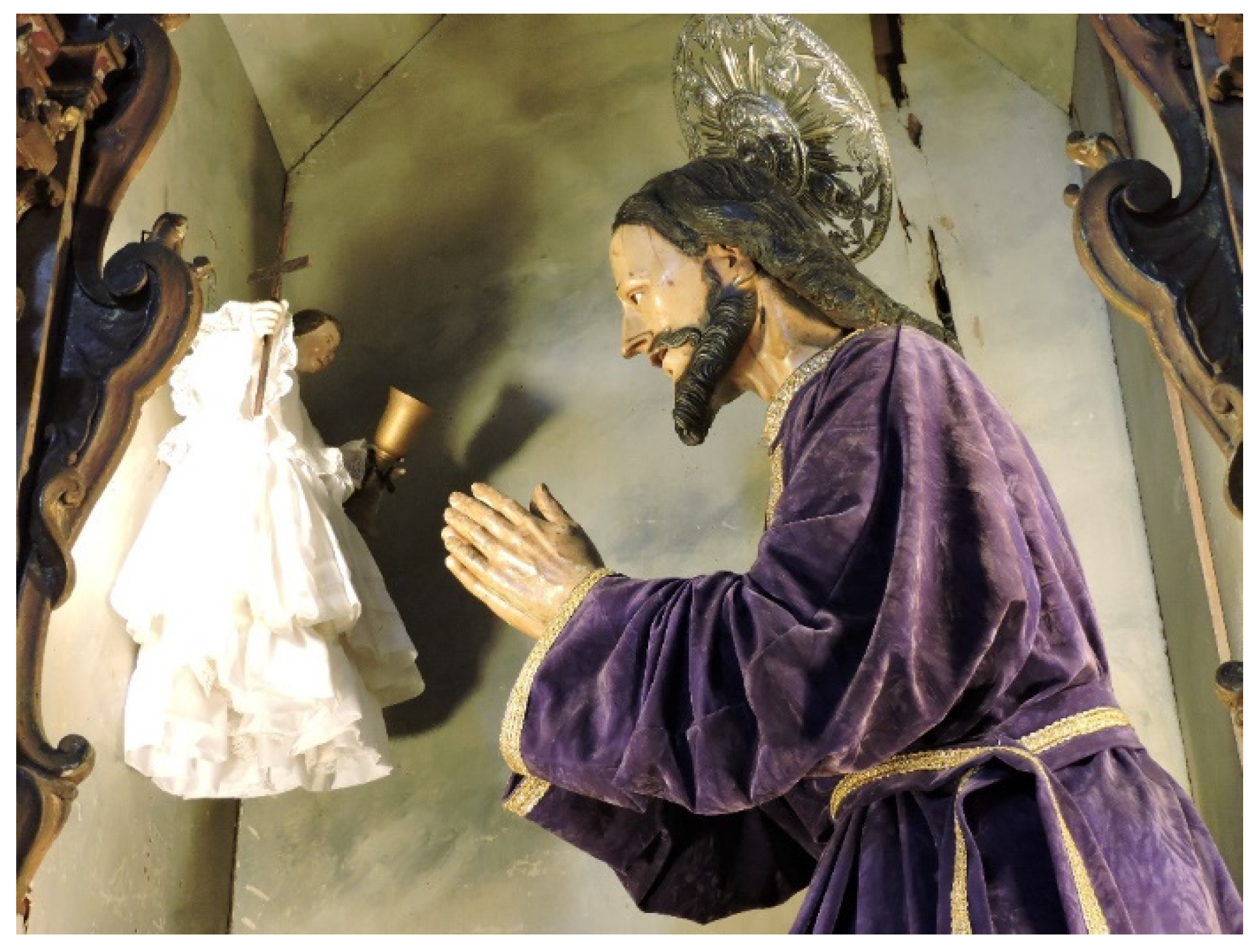
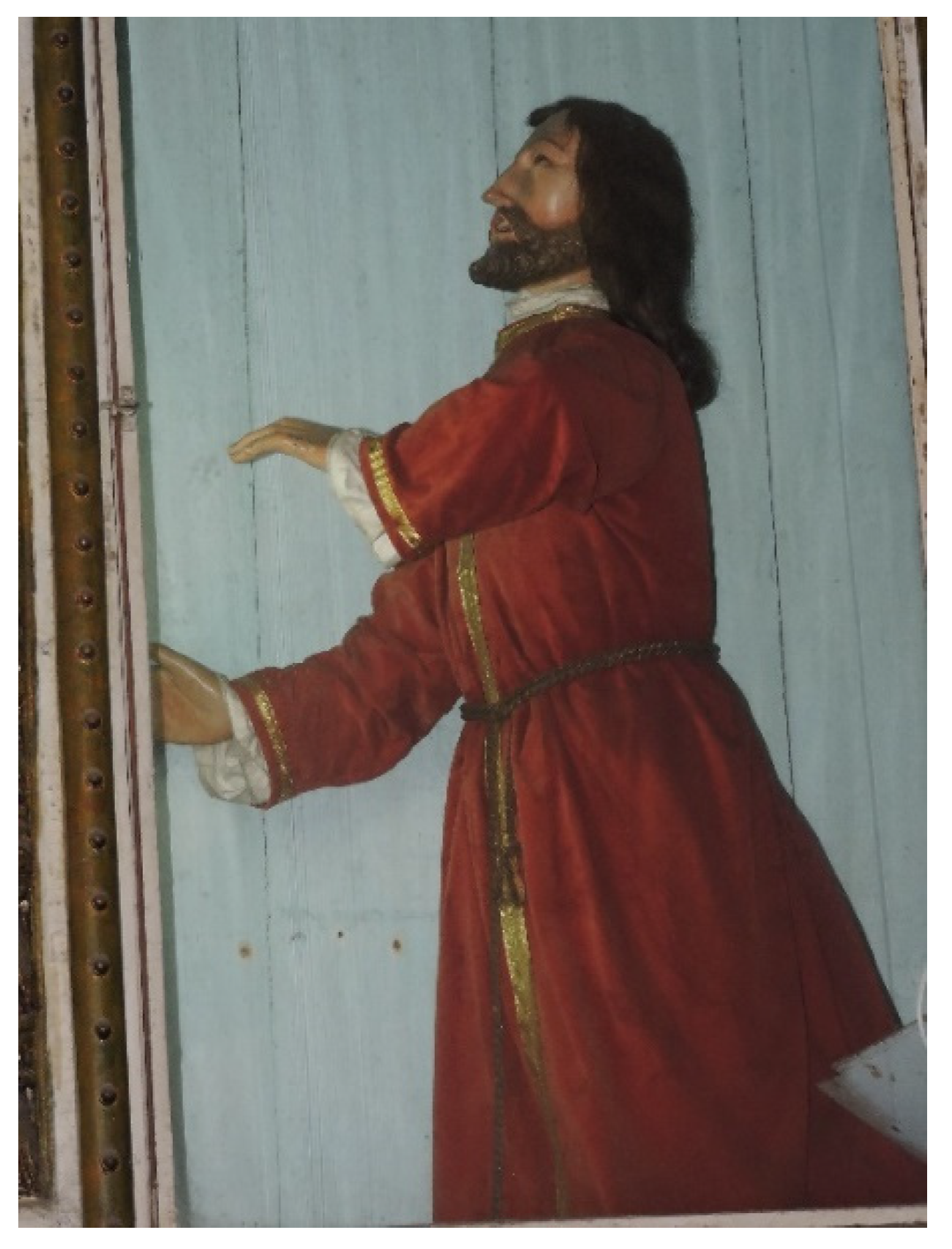
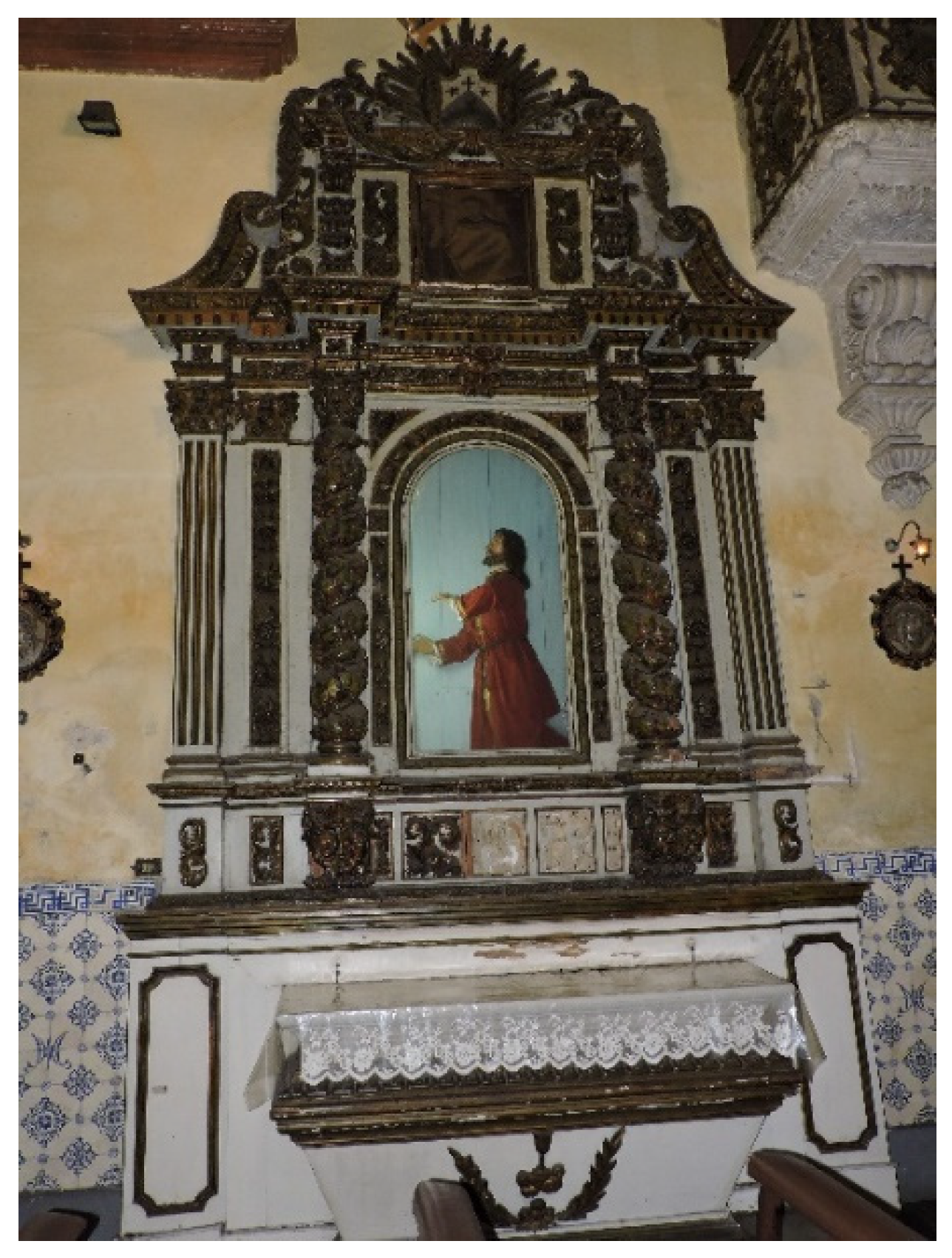
Publisher’s Note: MDPI stays neutral with regard to jurisdictional claims in published maps and institutional affiliations. |
© 2022 by the authors. Licensee MDPI, Basel, Switzerland. This article is an open access article distributed under the terms and conditions of the Creative Commons Attribution (CC BY) license (https://creativecommons.org/licenses/by/4.0/).
Share and Cite
Brusadin, L.; Stanfield-Mazzi, M. Representations of the Passion of Christ in Brazil: Devotional Sculpture as Open Artwork. Religions 2022, 13, 1138. https://doi.org/10.3390/rel13121138
Brusadin L, Stanfield-Mazzi M. Representations of the Passion of Christ in Brazil: Devotional Sculpture as Open Artwork. Religions. 2022; 13(12):1138. https://doi.org/10.3390/rel13121138
Chicago/Turabian StyleBrusadin, Lia, and Maya Stanfield-Mazzi. 2022. "Representations of the Passion of Christ in Brazil: Devotional Sculpture as Open Artwork" Religions 13, no. 12: 1138. https://doi.org/10.3390/rel13121138
APA StyleBrusadin, L., & Stanfield-Mazzi, M. (2022). Representations of the Passion of Christ in Brazil: Devotional Sculpture as Open Artwork. Religions, 13(12), 1138. https://doi.org/10.3390/rel13121138





